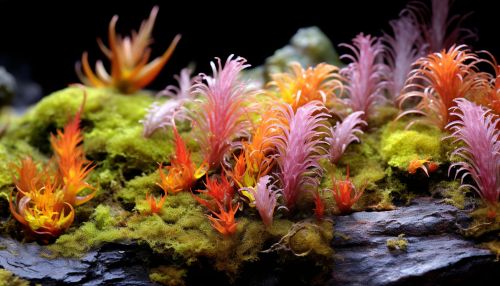Bryophyte
Introduction
Bryophytes are a group of plants that are among the simplest and most primitive, representing a crucial step in land plant evolution. They are characterized by their ability to thrive in a variety of environments, from arid deserts to lush rainforests. Bryophytes include three distinct groups: mosses, liverworts, and hornworts.


Characteristics
Bryophytes are small, herbaceous plants that lack true vascular tissue and reproduce via spores rather than seeds. They are non-vascular plants, meaning they do not have the specialized tissues xylem and phloem, which are used by vascular plants for water, nutrient transport, and structural support. Instead, they have structures called rhizoids that anchor them to their substrate and absorb water and nutrients.
Classification
Bryophytes are traditionally classified into three divisions: Bryophyta (mosses), Marchantiophyta (liverworts), and Anthocerotophyta (hornworts). Each of these divisions has distinct characteristics that differentiate them from one another.
Ecology
Bryophytes play a crucial role in the ecosystem. They help in soil formation, water retention in the ecosystem, and provide habitat and food for a variety of organisms. They are also indicators of environmental health, as they are sensitive to changes in their environment, particularly air and water quality.
Reproduction
Bryophytes reproduce both sexually and asexually. Sexual reproduction involves the production of specialized cells called gametes, while asexual reproduction involves the growth of new individuals from fragments of the parent plant, a process known as vegetative reproduction.
Economic Importance
Bryophytes have various economic uses. They are used as bioindicators to monitor air quality, in horticulture for soil conditioning and as decorative plants, and in traditional medicine for their various therapeutic properties.
Conservation
Many species of bryophytes are threatened by habitat loss, pollution, and climate change. Conservation efforts are crucial to preserving these important components of our ecosystems.
